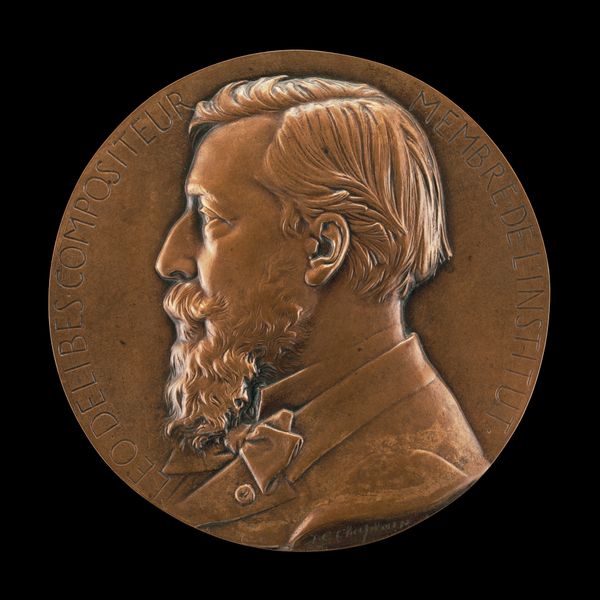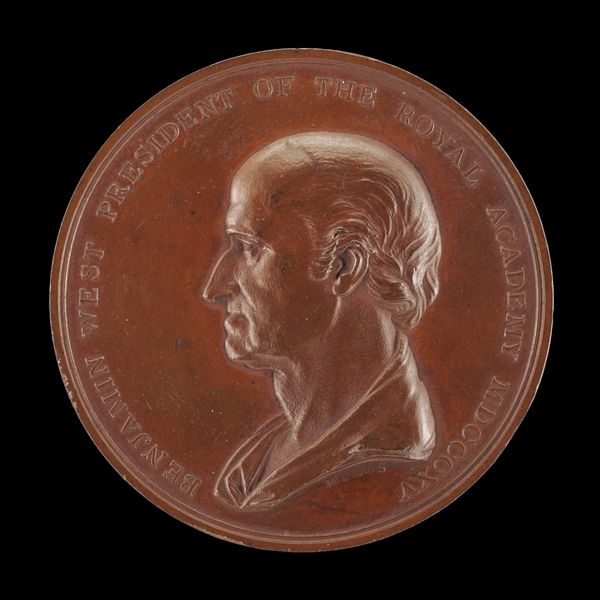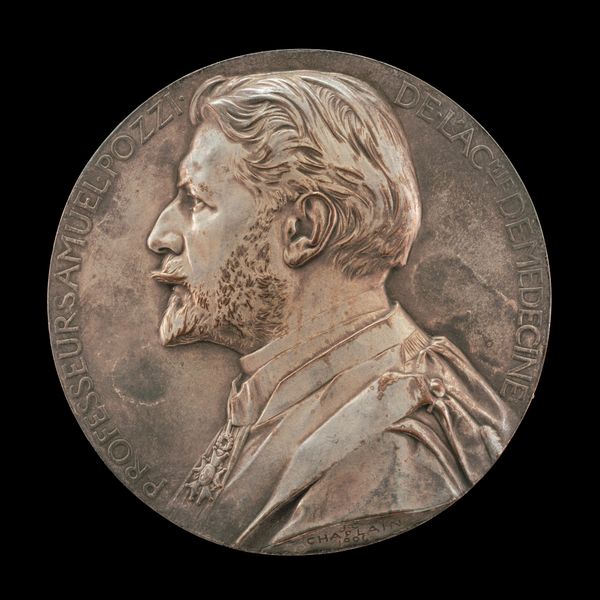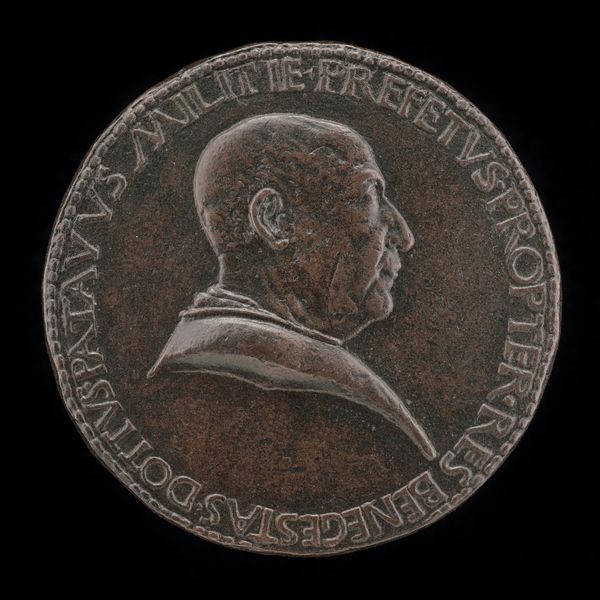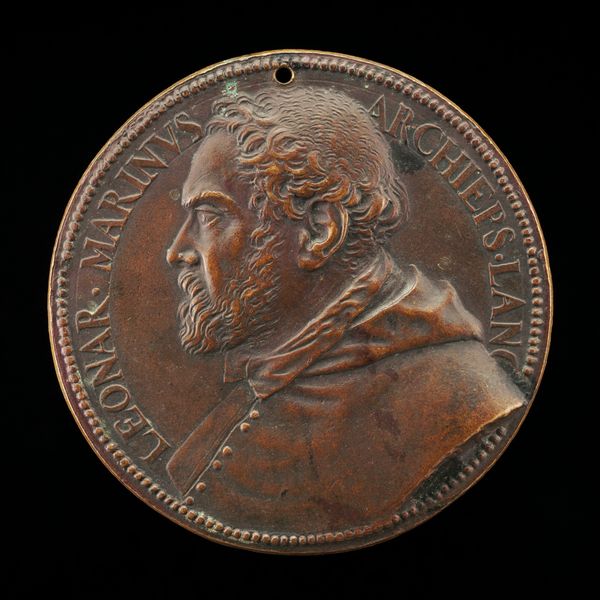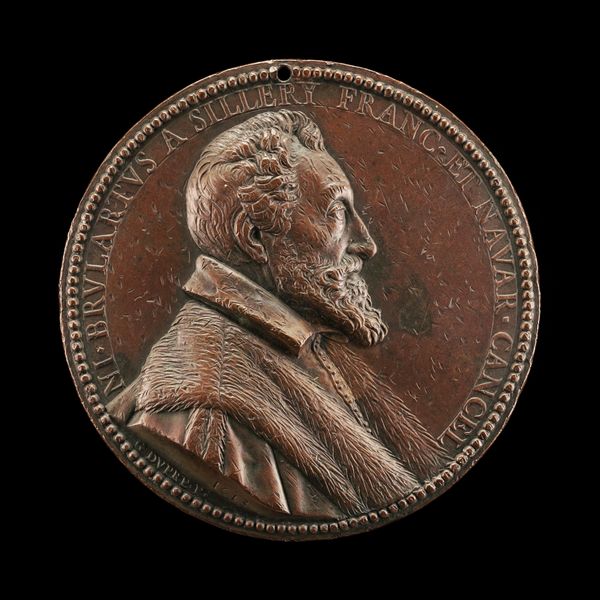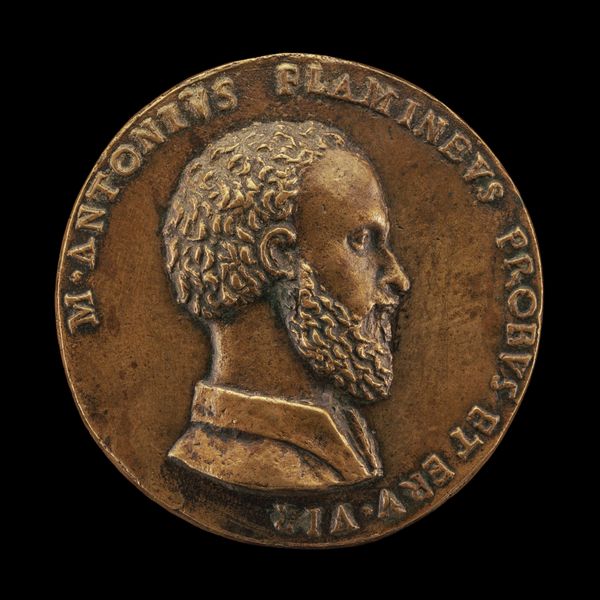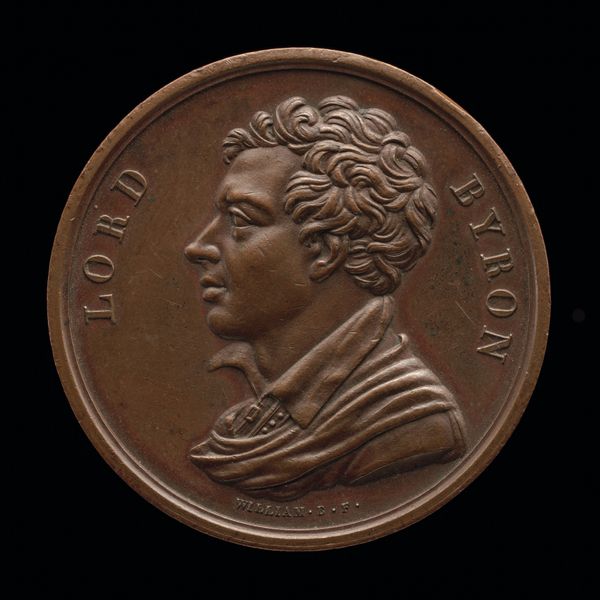
Dimensions: overall (diameter): 12.1 cm (4 3/4 in.)
Copyright: National Gallery of Art: CC0 1.0
Editor: This is a bronze portrait medal titled "Maurice Albert, 1854-1907", created in 1879 by Louis-Oscar Roty. The detail is exquisite; it captures a very dignified profile. What do you make of it? Curator: It's fascinating how medals, from antiquity onwards, served as tools for cultural memory. Bronze, like here, connects us back to those historical precedents. It is the perfect medium to portray someone who had, in his lifetime, an impact on a specific audience or community. How does this cultural object speak to us? Editor: The inscription, "Membre de l'Ecole Franc. de Rome," tells us Maurice Albert was part of that academic community. He was preserving a certain tradition. Is the portrait itself symbolic of his role, of this academic structure, in any way? Curator: Absolutely! The profile view is classical, evoking Roman coins and imperial imagery. Consider the Neoclassical style here; the face and hairline is sharply defined, indicating order, rationality, and the intellectual aspirations associated with the academy and Neoclassicism. The portrait is a symbol within itself. Don’t you think so? Editor: I see what you mean! So the artistic style amplifies the message of the subject's intellectual standing. Curator: Precisely! He isn’t just Maurice Albert; he's Maurice Albert, *Member* of a prestigious institution. This bronze medium further memorializes the man and connects him to tradition. Editor: That gives me a richer understanding. Thanks! I hadn't considered the conscious decision to cast this in bronze, and how this choice connects it with cultural and visual legacies.
Comments
No comments
Be the first to comment and join the conversation on the ultimate creative platform.
